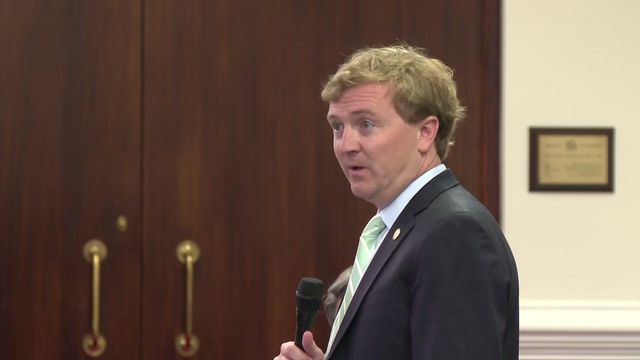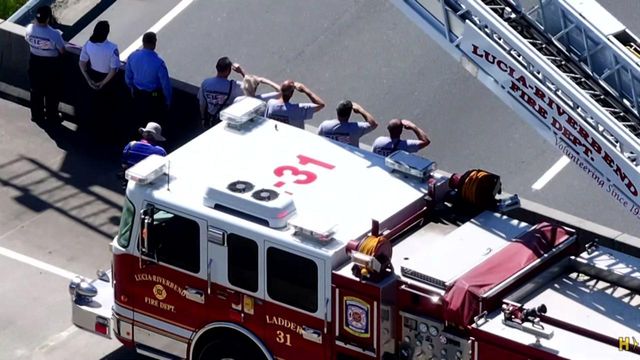Wander the Halls, Say Hello: A New Approach to School Safety

NEW YORK — School districts across the country have added new layers of security to their buildings, and the federal government has signaled a willingness to arm teachers in the wake of the Parkland, Florida, massacre. But on the first day of school, New York tacked in a different direction.
Starting this week, Mayor Bill de Blasio said Wednesday, the city would launch a pilot program at a group of Bronx schools to turn school safety agents into the equivalent of beat cops. The city was asking 63 of the agents who work in 30 high schools to walk the hallways in search of wandering students, meet with principals to discuss brewing conflicts between children, and wish every child a good morning before first period
That will be a new job for many of the agents who currently spend their entire days at a school’s front desk, sometimes curtly asking for identification from visitors. And it will require parents, and especially students, to look at their safety agents in a new light. To highlight their new role, the agents, who work for the Police Department and are not armed, will be known as school coordination agents.
Rachel Harris, who has 35 years of experience in Bronx schools and now works at Intermediate School 219, has already spent years as an unofficial school beat cop. “I always tell the kids I love them even if they’re miserable and cursing me out,” Harris said, adding, “Sometimes that breaks the ice with them, sometimes it doesn’t and I need to think of a new strategy.”
The new program represents the latest phase of the neighborhood policing plan that Police Commissioner James O’Neill helped create and that de Blasio has adopted as the centerpiece of his policing agenda.
It comes amid a broader push by de Blasio to change how schools deal with discipline in the hopes of keeping schools safe without unfairly penalizing minority students. He has moved to institute an approach known as restorative justice, which emphasizes defusing conflict over punishments like detention and suspension that activists say disproportionately affect students of color.
But the first homicide in a city school in two decades, a fatal stabbing last fall at a Bronx school that had instituted the new discipline practices, spurred a deeply politicizeddebate about that approach.
Critics of de Blasio’s philosophy said it has left the city’s most vulnerable children in increasingly chaotic schools. That concern has been amplified by pro-charter-school groups that disagree with the mayor’s education agenda and by Local 237, the union that represents the city’s school safety agents.
Supporters said that the issue at the school, the Urban Assembly School for Wildlife Conservation, was not the new approach to safety, and feared that the stabbing would be used to justify policies that some students believe make their schools feel militarized without actually making them more secure.
Both sides rely on imperfect data to make their claims: The city and state Education Departments track incidents in schools differently, although the state data most frequently cited by de Blasio’s critics is seen as particularly unreliable and is being revamped by the State Education Department.
The most recent Police Department data showed that major crime in schools dropped by 8 percent this past school year compared to the previous year, though weapons recoveries in schools have spiked in recent years. The city spends $47 million a year to drive down suspensions and test new restorative discipline practices.
The Bronx neighborhoods where the plan is being implemented have some of the highest rates of school safety incidents in the city and have at times seemed impervious to attempts to drive down crime. That is exactly the point, according to the Police Department. “This is where you’re going to have the most impact,” O’Neill said of the pilot neighborhoods. Neighborhood policing started in 2015 in parts of Upper Manhattan that have also suffered from above-average crime rates, he added.
The 42nd Precinct, which includes parts of the South Bronx, had nearly 140 safety incidents in its 29 schools between April and July, including 50 cases of children brought to a hospital for a psychological evaluation after being found in emotional distress, and 20 uses of handcuffs on children, one as young as 13, according to Police Department data. The 6th Precinct, which includes the West Village, had four incidents in its schools during the same period; the 10th Precinct, which includes Chelsea, had 12.
Some black and Hispanic students have said they are less concerned about a hypothetical mass shooting than with the acute feeling of being criminalized by the police in their schools, particularly because the 93 school buildings with metal detectors are clustered in poor and minority neighborhoods.
At a town-hall meeting held in the weeks after the Parkland shooting in February, de Blasio asked a group of about 100 students whether they felt they could confide in their school’s safety agent. Almost no hands went up. “We’ve got some work to do, it’s not a shocker,” the mayor said at the time.
School safety agents “want to feel good about what they do,” O’Neill said in an interview at Police Headquarters in downtown Manhattan. “Not just come in and be robotic and answer 911 calls or stand at the front of the school checking names, checking people who come in, they want to have relationships with people. I think that makes their job so much more rewarding.”
Lavonda Wise, a police captain, noted that most of the safety agents involved in the pilot grew up in the Bronx or live near the schools they patrol, which could help them connect with the students they serve. “A lot of times with kids, they don’t really want to hear what you have to say unless you’ve actually experienced it yourself,” she said. During a recent training session at the Police Department’s hangar-like facility in Flushing, Queens, Harris and other agents with years of experience said they often did not know how to bring issues they observe in their schools to the right person.
Two Education Department officials at the front of a brightly lit classroom ticked off the alphabet soup of acronyms that represents the city’s various resources for parents, principals and teachers. The several dozen agents were encouraged to attend meetings and build relationships with groups they didn’t know existed.
“We were like, ‘We don’t even know what the hell you’re talking about,’” Maximino Acosta, an agent with 14 years of experience in Bronx schools, said of the session.
If the program is expanded, its success will rely in part on the city’s ability to find hundreds of safety agents able to patrol the city’s 1,300 school buildings effectively.
Donna Lieberman, the executive director of the New York Civil Liberties Union, said she does not believe neighborhood policing in schools is the solution she has been waiting for. While Lieberman praised the school safety division for its focus on driving down unnecessary suspensions, she said there are still “pathetically low” numbers of guidance counselors and social workers in schools.
“What would have been welcome news as we open a school year would have been an announcement that the Department of Education has identified and hired educators to be walking the hallways,” Lieberman said.








